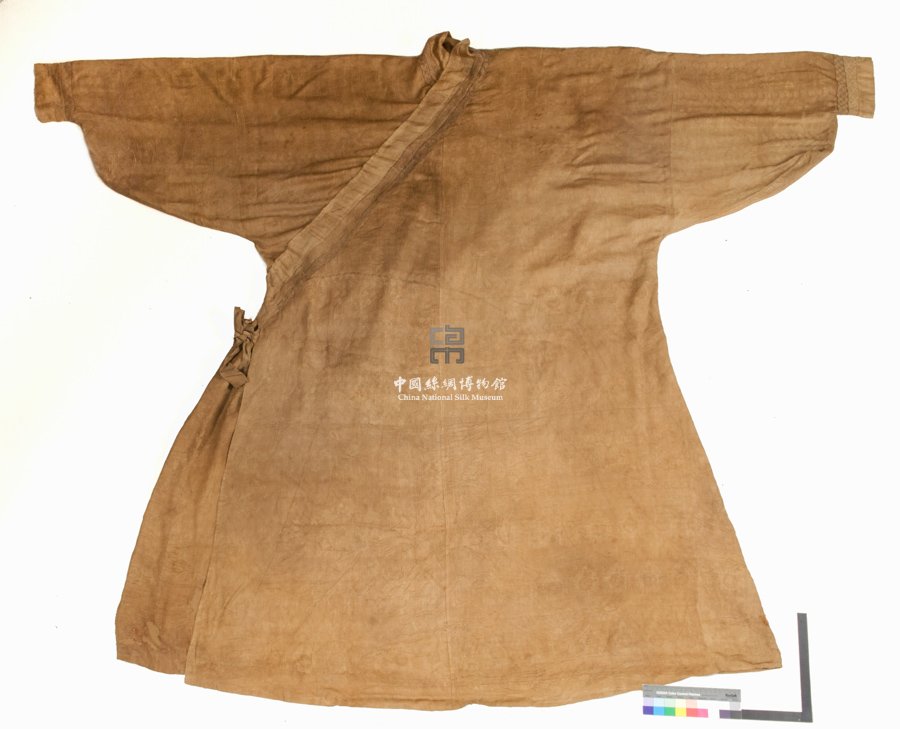
Yuan Dynasty. 13 century
China National Silk Museum, Hangzhou
Inv. No. 2593
L145cm, H200cm
This damask silk gown, with long wide sleeves and a right-side buttoning front, was the formal dress for aristocratic Mongolian women in the Yuan Dynasty. In book titled Records on Geography and Customs of Beijing, the writer described gowns of this kind as follows: “It is excellently tailored, with sleeves gathered at the cuffs, decorated with purple and gold. The cuff width is only 5 cuns (1 cun equals 3.3cm) wide – narrow but long, dropping; it has purple gauze belt fastened to back, for tying to waist and it is also to be lifted and carried as the walks. When a lady needs to attend a social gathering, she wears a gown of this kind. It is known as a ceremonial dress.” William of Rubruck wrote in his book entitled The Journal of William of Rubruck to the Eastern Parts, 1253-1255 that married women only were allowed to wear such gowns: “They put it on after the wedding ceremony and the shaving of half of the head. This garment is looser than what Buddhist nuns wear. Its front is right-buttoned.”
The motif is a small cloud design of 1.3cm, arranged in rows. The originally gold foil is lost, leaving only traces of it in the heart-shaped designs with birds inside. The shoulders were also decorated, presumably in gold, but the design is hard to distinguish. This design was to greatly influence clothing styles along the Silk Road as well as Chinese costumes of the successive Ming and Qing Dynasties, when overlapping dragon robes were inspired. The collar and cuffs were originally ornamented with nasij lampas, with rosette in lozenge designs on the outside and dotted floral patterns inside, produced by Imperial workshops as mentioned in the Yuan Chronicles. (XY)
 Pay attention to us
×
Pay attention to us
×